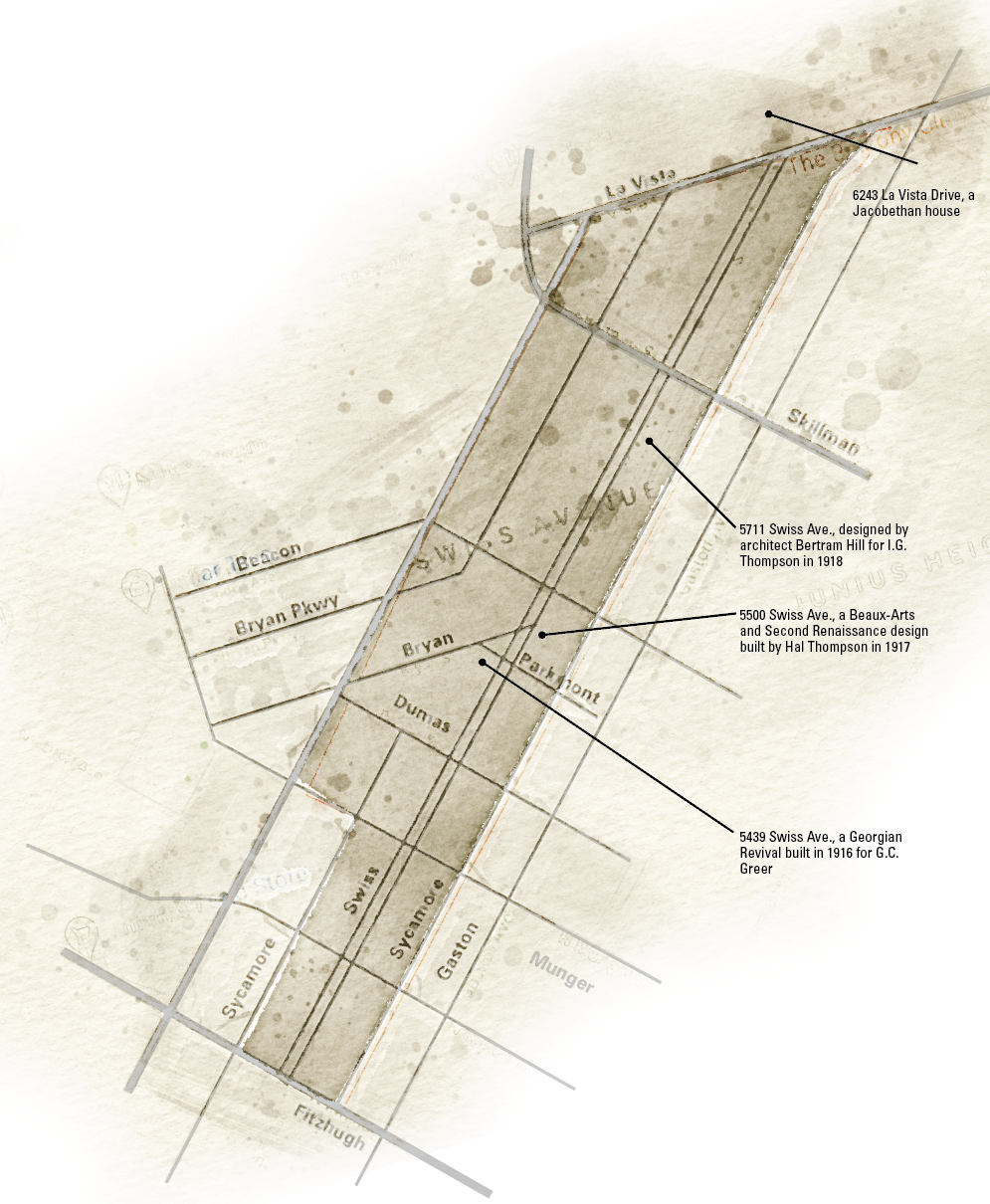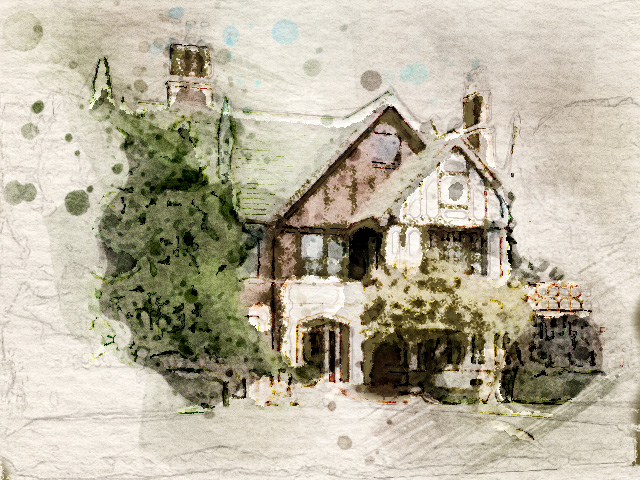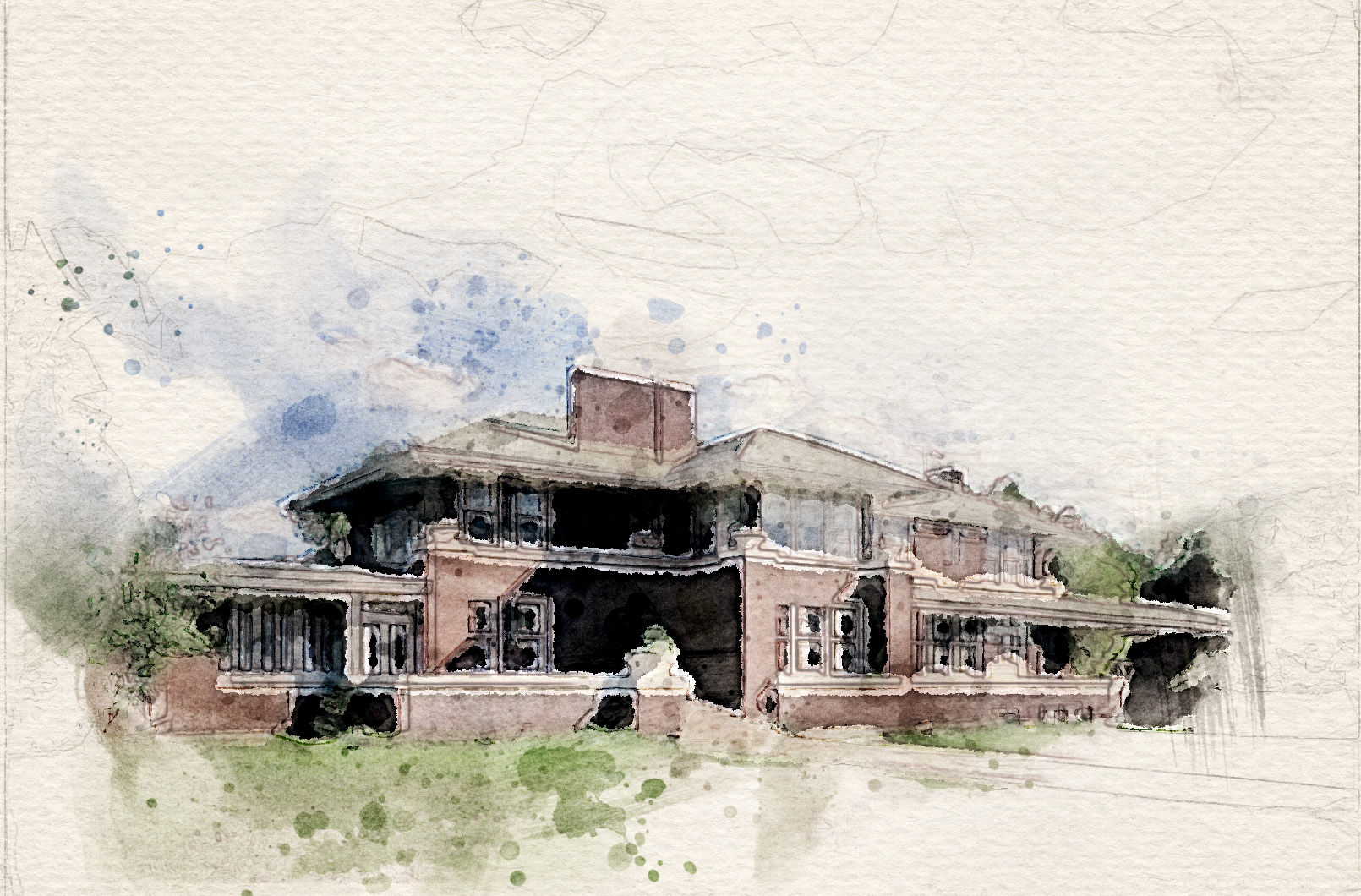
IN 1905, cotton gin manufacturer Robert S. Munger founded 300-acre Munger Place, a neighborhood with Swiss Avenue as the crown jewel. The tagline from the original Munger Place advertisement was “The City Man’s Home.” Munger Place, including the tree- lined boulevard on Swiss, had paved streets and sidewalks, a rarity at the time. The alley between Swiss and Gaston avenues was a rail spur for those who had private rail cars. Munger envisioned elegant, expansive two-story homes that cost at least $10,000 built on large lots. The neighborhood attracted elite architects, as well as the business and social class. Each homeowner shaped the future of Dallas and sought individual architectural tastes. The neighborhood is a mishmash of Neoclassical, Tudor, Spanish Eclectic, Italian Renaissance, Colonial Revival and Prairie School styles. Notable architects, including Hal Thompson, Bertram Hill, C.E. Barglebaugh and Lang & Witchell, constructed many of the homes.

NOTABLE NEIGHBORS:
5750 Swiss Ave. Dr. J.H. Cristler built this house in 1923. His daughter Edna and her husband Mayor Woodall Rodgers lived in the house starting in 1938.
4946 Swiss Ave. Bishop Joseph Pat- rick Lynch from the Catholic Diocese of Dallas lived in this house, which was built in 1913.
5400 Swiss Ave. Collett H. Munger, manager of Munger Place, lived in this home, which was built in 1908.
5803 Swiss Ave. Al Neiman and Carrie Marcus Neiman, founder of Neiman Marcus, lived in this home.
5020 Swiss Ave. This home was showcased in the pilot episode of “Dallas.”

THE ALMOST FRANK LLOYD WRIGHT HOUSE
Often mistaken as a Frank Lloyd Wright house, 5002 Swiss Ave. was designed by architecture firm Lang & Witchell and constructed in 1913. This house was designed in the Prairie School style, which was very popular during the late 1800s and early 1900s. Wright was one of the architects who designed heavily in this style during the same period that Swiss Avenue homes were built.
Lang & Witchell were influenced by Louis Sullivan and Wright. One of the associates who worked with Lang & Witchell, Charles Barglebaug, trained with Wright before coming to Dallas. This explains why the house looks like a Wright. It’s considered one of the “purest” Prairie School- style homes.
The home was designed for Rufus W. Higginbotham, a founder of the largest wholesale dry goods business in the South during the early 1900s.
MAGNOLIA PETROLEUM COMPANY
If you worked in upper management at the Magnolia Petroleum Company, there’s a good chance you lived on Swiss Avenue. The president of the oil company, George C. Greer, lived on 5439 Swiss Ave. in a Georgian Revival home. The chairman of the board and his wife, Mr. And Mrs. E.R. Brown, lived at 5314 Swiss Ave. Mrs. Brown had her heart set on an Italian Villa. Benjamin Stephens, the founder of Magnolia Petroleum Company, built 5634 Swiss Ave. He was director of Mercantile National Bank and Dallas Federal Savings and Loan. He was a political adviser appointed by President Franklin D. Roosevelt during World War II. They were all within the trolley distance of the Magnolia Petroleum building on Commerce Street. The company’s magnolia logo was replaced by the pegasus in the 1930s. Magnolia Petroleum Company later became Mobil Oil Corporation.
QUEEN OF SWISS AVENUE
Bottle-blonde Mary Ellen Logan Bendtsen spent most her life chasing a career as a model and film star. Mary Ellen was a model for one of the Art-Deco statues at Fair Park’s 1936 Centennial Exposition before going East. She was a LIFE magazine “Ideal Dream Girl” and Cosmopolitan magazine cover girl. Meanwhile, in Dallas, her parents and sister scrounged enough money to buy the “Queen of Swiss Avenue” at 4949 Swiss Ave. Originally built for W.W. Caruth, the Logan family purchased the Prairie School home in the late 1940s. Mary Ellen eventually inherited the mansion and filled it with parties and cocktails.
Sources: National Register of Historic Places Inventory Form via Dallas City Hall, 1974; Preservation Dallas; The Texas Railway Journal, Volumes 17-18; Swiss Avenue Historic District.





